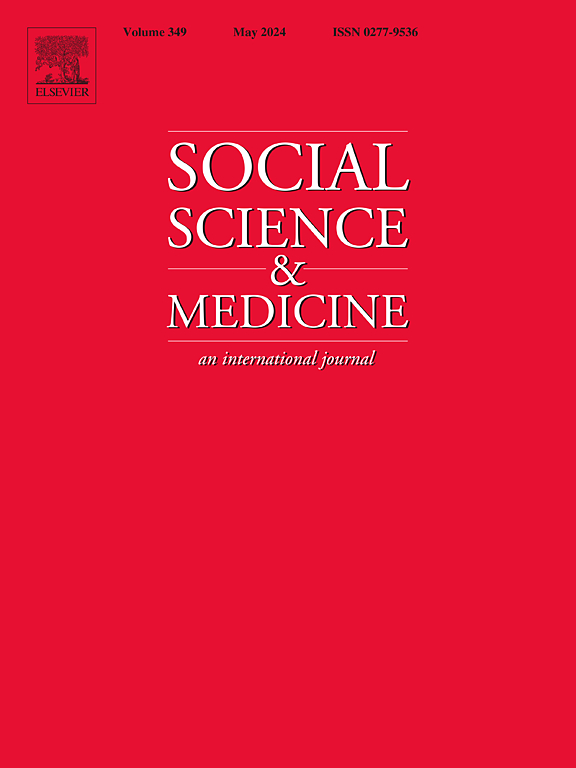The healthcare experiences of LGBTQ people with intellectual and developmental disabilities in the United States: A scoping review
IF 4.9
2区 医学
Q1 PUBLIC, ENVIRONMENTAL & OCCUPATIONAL HEALTH
引用次数: 0
Abstract
Lesbian, gay, bisexual, transgender, and queer (LGBTQ) people and people with intellectual and developmental disabilities (IDD) each face multiple systems of oppression (e.g., cissexism, ableism) that produce interpersonal, institutional, and environmental barriers to accessing healthcare services. For people with intersecting LGBTQ and IDD identities, these barriers coalesce to further restrict access to healthcare, worsening quality of health and health disparities. This scoping review explores the experiences of LGBTQ people with IDD and the barriers and facilitators they encounter when accessing care within the U.S. healthcare system. Identification of barriers and facilitators can inform multi-level intervention targets including provider knowledge, skills, and attitudes and advocacy strategies for environmental and systems-level change. A registered protocol guided the search for peer-reviewed and grey literature sources published before November 24, 2024. Sources included LGBTQ people with IDD and reported on experiences accessing and navigating healthcare services. Twenty-one articles were included in the review. The Behavioral-Ecological Framework of Healthcare Access and Navigation informed mapping of findings. Articles primarily described personal and provider factors (n = 17) that impact access to care and the healthcare environment (n = 14), while fewer described social environments (n = 7). Little attention has been paid to the built environment. Barriers included patient-provider communication challenges, difficulty finding competent providers, and the complexity of navigating healthcare systems. Facilitators included supportive social networks, affirming and accommodating providers, and healthcare policies that reduce healthcare costs and offer legal protection.
美国智力和发育障碍LGBTQ人群的医疗保健经历:范围审查
女同性恋、男同性恋、双性恋、变性人和酷儿(LGBTQ)人群以及智力和发育障碍(IDD)人群都面临多重压迫系统(例如,自恋歧视、残疾歧视),这些压迫系统在获得医疗保健服务方面产生了人际、制度和环境障碍。对于LGBTQ和缺碘症双重身份的人来说,这些障碍结合在一起,进一步限制了他们获得医疗保健的机会,加剧了健康质量和健康差距。本综述探讨了患有IDD的LGBTQ人群的经历,以及他们在美国医疗保健系统中获得护理时遇到的障碍和促进因素。识别障碍和促进因素可以为多层次干预目标提供信息,包括提供者的知识、技能、态度和倡导策略,以促进环境和系统层面的变化。一份注册协议指导对2024年11月24日之前发表的同行评审和灰色文献来源的搜索。来源包括患有IDD的LGBTQ人群,他们报告了获得和导航医疗保健服务的经历。本综述共纳入21篇文章。医疗保健获取和导航的行为-生态框架通知了调查结果的映射。文章主要描述了影响获得护理和医疗保健环境的个人和提供者因素(n = 17) (n = 14),而较少描述社会环境(n = 7)。人们对建筑环境的关注很少。障碍包括患者与提供者之间的沟通困难、难以找到合格的提供者以及导航医疗保健系统的复杂性。促进因素包括支持性社交网络、肯定和容纳提供者,以及降低医疗成本和提供法律保护的医疗保健政策。
本文章由计算机程序翻译,如有差异,请以英文原文为准。
求助全文
约1分钟内获得全文
求助全文
来源期刊

Social Science & Medicine
PUBLIC, ENVIRONMENTAL & OCCUPATIONAL HEALTH-
CiteScore
9.10
自引率
5.60%
发文量
762
审稿时长
38 days
期刊介绍:
Social Science & Medicine provides an international and interdisciplinary forum for the dissemination of social science research on health. We publish original research articles (both empirical and theoretical), reviews, position papers and commentaries on health issues, to inform current research, policy and practice in all areas of common interest to social scientists, health practitioners, and policy makers. The journal publishes material relevant to any aspect of health from a wide range of social science disciplines (anthropology, economics, epidemiology, geography, policy, psychology, and sociology), and material relevant to the social sciences from any of the professions concerned with physical and mental health, health care, clinical practice, and health policy and organization. We encourage material which is of general interest to an international readership.
 求助内容:
求助内容: 应助结果提醒方式:
应助结果提醒方式:


